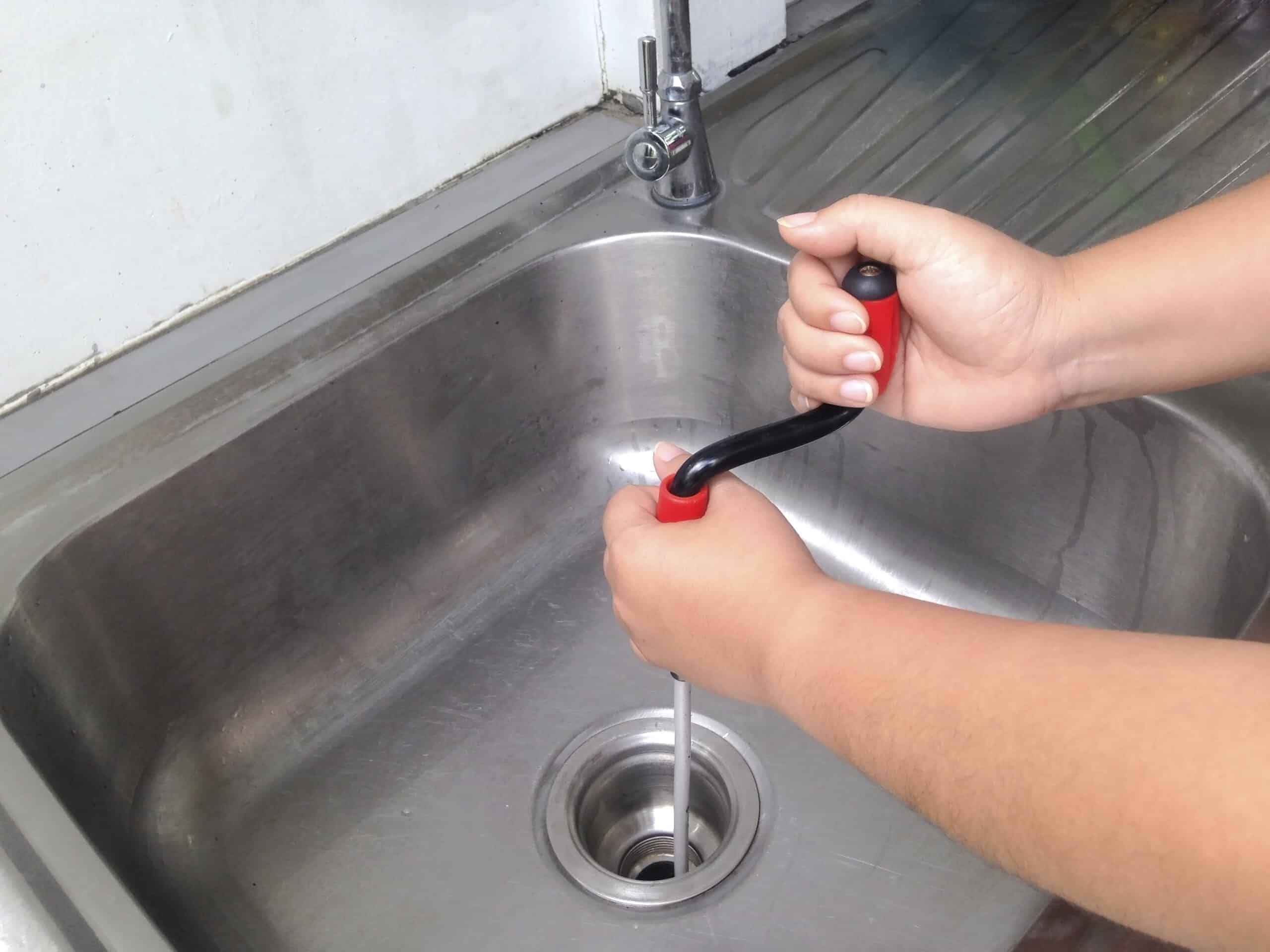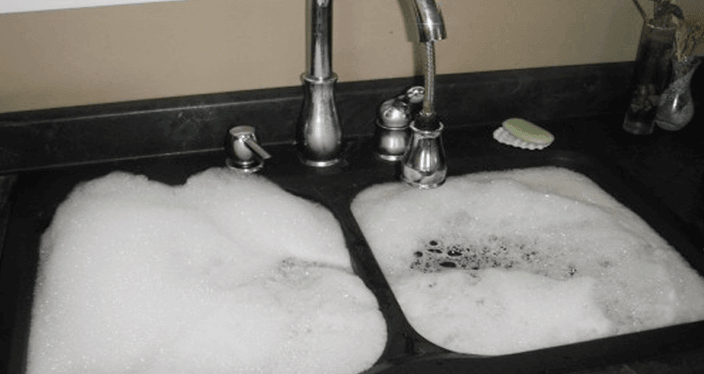Presented here below you can locate a good deal of brilliant tips on the subject of Common Household Plumbing Issues.

In this short article, we will be looking at 5 basic actions you could require to release your kitchen sink from clogs and also conserve you from the pain as well as humiliation of handling a clogged cooking area sink.
Clogged cooking area sinks are one of the most common drain problems home owners deal with. As well as what's even more, it's a unpleasant and very awkward sight. Envision going to the sink to do your recipes and also learning that the drainpipe is obstructed as well as water can not flow down quickly.
A lot of clogged up water drainages are brought on by food debris, fat, soap, and also oil fragments. They block the sink and make it hard for water to decrease the drainpipe swiftly. While it is alluring to put a call through to the plumbers, there are a couple of DIY hacks you can attempt first prior to making that telephone call.
1. Sodium Bicarbonate as well as Vinegar
Instead of using any type of kind of chemicals or bleach, this method is much safer as well as not dangerous to you or your sink. Baking soda as well as vinegar are day-to-day home items utilized for several other things, and they can do the trick to your kitchen area sink.
Firstly, eliminate any water that is left in the sink with a cup.
Then put an excellent quantity of baking soft drink down the tubes.
Pour in one cup of vinegar.
Seal the drain opening as well as allow it to go for some minutes.
Pour warm water down the drain to dissolve various other stubborn residue as well as particles.
Following this basic approach could do the trick, and you can have your cooking area sink back. Repeat the procedure as much as you deem essential to rid the sink of this debris totally.
2. Attempt a Plunger
If the issue is not from the garbage disposal, you can try making use of a plunger. Bettors are standard residence tools for this occasion, and they can be available in useful if you utilize them properly. A flat-bottomed plunger is most suitable for this, but you can use what you have is a toilet plunger.
Adhere to the list below basic actions to use the plunger effectively:
Secure the drain with a rag and also fill the sink with some warm water
Place the bettor in position over the drainpipe and also begin diving
Check to see if the water runs freely after a couple of dives
Repeat the process until the drain is free
3. Possibly it's the Garbage Disposal
In lots of instances, the blockage might be due to a blockage in the disposal. Use pliers rather.
You can check out the adhering to choice to unclog your kitchen sink if this does not work.
4. Use a Hanger
Making use of a cord towel hanger or a plumber's snake if you have one can do the method. All you require do is correct the alignment of the hanger to go down the drainpipe while you very carefully pick out the particles creating the obstruction.
Run warm water down the tubes hereafter to see how effective you were.
5. Usage Boiling Water
When confronted with a clogged up sink, the first thing you should attempt is to pour boiling water down the drainpipe. That has to do with the most simple treatment to clogged up sinks and also water drainages. Boiling water aids counteract the bits as well as debris triggering the blockage, particularly if it's oil, soap, or oil bits, as well as in most cases, it can flush it all down, and also your sink will be back to regular.
Do not attempt this approach if you have plastic pipelines (PVC) because hot water might thaw the lines as well as create even more damage. You might desire to stick to using a plunger to get particles out if you make use of plastic pipelines.
Utilizing this technique, switch on the tap to see exactly how water moves after putting warm water down the drain. Attempt the procedure once more if the blockage persists. Nonetheless, the blockage could be extra relentless in many cases and also call for greater than simply boiling water.
Final Words
Trying these few tricks can conserve you the expenditures of having a plumber examine it. In numerous situations, a plumber is what we require. In cases where you find it difficult to unblock the sink even after attempting all these approaches, it might be time to leave it to the professionals.
Get in touch with professional plumbing companies to fix your drain issues and also other different house plumbing demands.
Clogged kitchen area sinks are one of the most usual drainage issues home owners face. Think of going to the sink to do your recipes and locating out that the drain is clogged and water can not move down easily.
They block the sink and also make it hard for water to go down the drainpipe promptly. When encountered with a clogged up sink, the first point you should attempt is to pour boiling water down the drain. Boiling water assists neutralize the particles and particles triggering the clog, especially if it's oil, soap, or oil fragments, and also in many situations, it can purge it all down, and your sink will certainly be back to typical.
How to Unclog a Kitchen Sink
Take the Plunge
Start your efforts by plunging. Use a plunger with a large rubber bell and a sturdy handle. Before getting to work on the drain, clamp the drain line to the dishwasher. If you don t close the line, plunging could force dirty water into the dishwasher.
Fill the sink with several inches of water. This ensures a good seal over the drain.
If you have a double sink, plug the other drain with a wet rag or strainer.
Insert the plunger at an angle, making sure water, not air, fills the bell.
Plunge forcefully several times. Pop off the plunger.
Repeat plunging and popping several times until the water drains.
Clean the Trap
The P-trap is the curved pipe under the sink. The trap arm is the straight pipe that attaches to the P-trap and runs to the drain stub-out on the wall. Grease and debris can block this section of pipe. Here s how to unclog a kitchen sink by cleaning out the trap:
Remove as much standing water from the sink as possible.
Place a bucket under the pipe to catch the water as it drains.
Unscrew the slip nuts at both ends of the P-trap. Use slip-joint pliers and work carefully to avoid damaging the pipes or fasteners.
If you find a clog, remove it. Reassemble the trap.
If the P-trap isn t clogged, remove the trap arm and look for clogs there. Run the tip of a screwdriver into the drain stub-out to fetch nearby gunk.
Spin the Auger
With the trap disassembled, you re ready to crank the auger down the drain line.
Pull a 12-inch length of cable from the auger and tighten the setscrew.
Insert the auger into the drain line, easing it into the pipe.
Feed the cable into the line until you feel an obstruction. Pull out more cable if you need to.
If you come to a clog, crank and push the cable until you feel it break through. The cable will lose tension when this happens.
Crank counterclockwise to pull out the cable, catching the grime and debris with a rag as the cable retracts.

As a keen reader on DIY Plumbing Fixes, I think sharing that excerpt was beneficial. If you appreciated our blog posting if you please make sure you remember to pass it around. Thanks a lot for going through it.
Expertise at your service.
 Shaun Weiss Then & Now!
Shaun Weiss Then & Now! Barret Oliver Then & Now!
Barret Oliver Then & Now! Hallie Eisenberg Then & Now!
Hallie Eisenberg Then & Now! Katie Holmes Then & Now!
Katie Holmes Then & Now! Loni Anderson Then & Now!
Loni Anderson Then & Now!